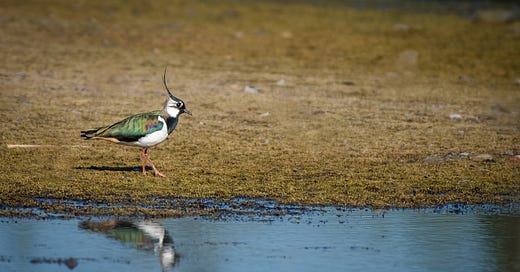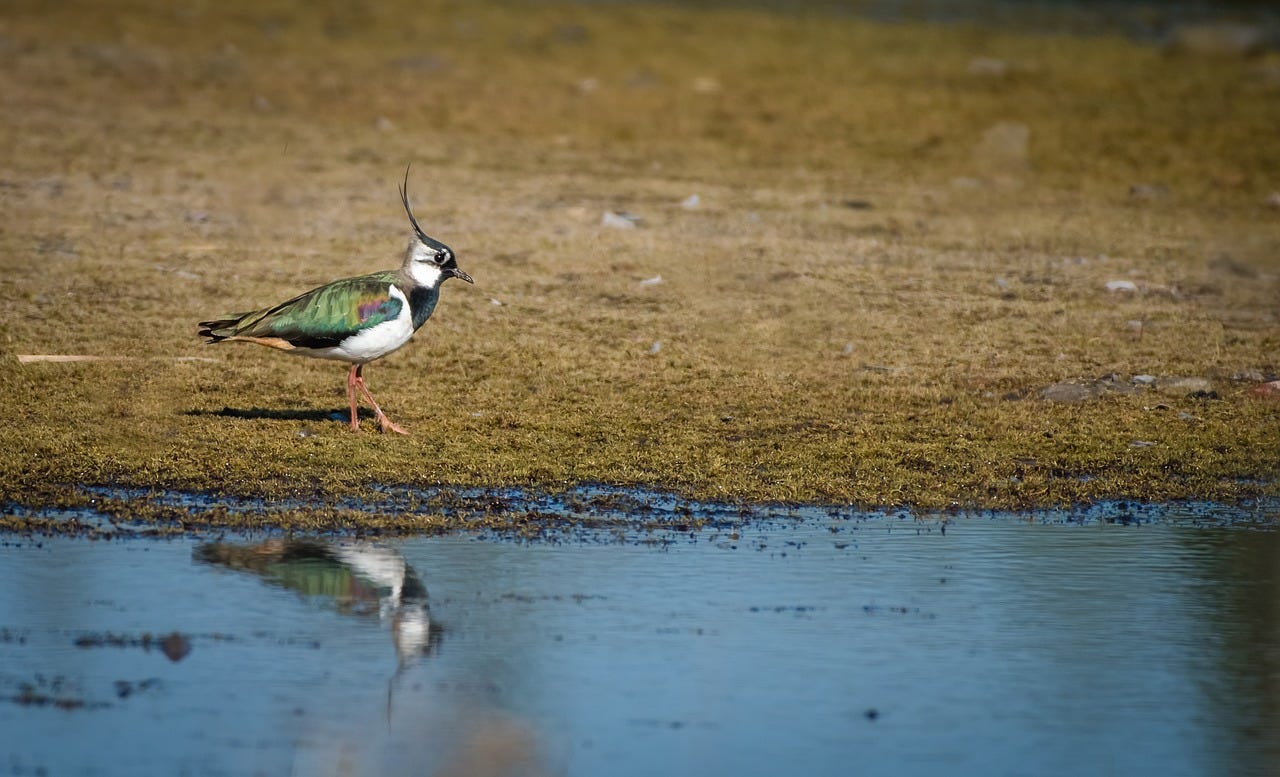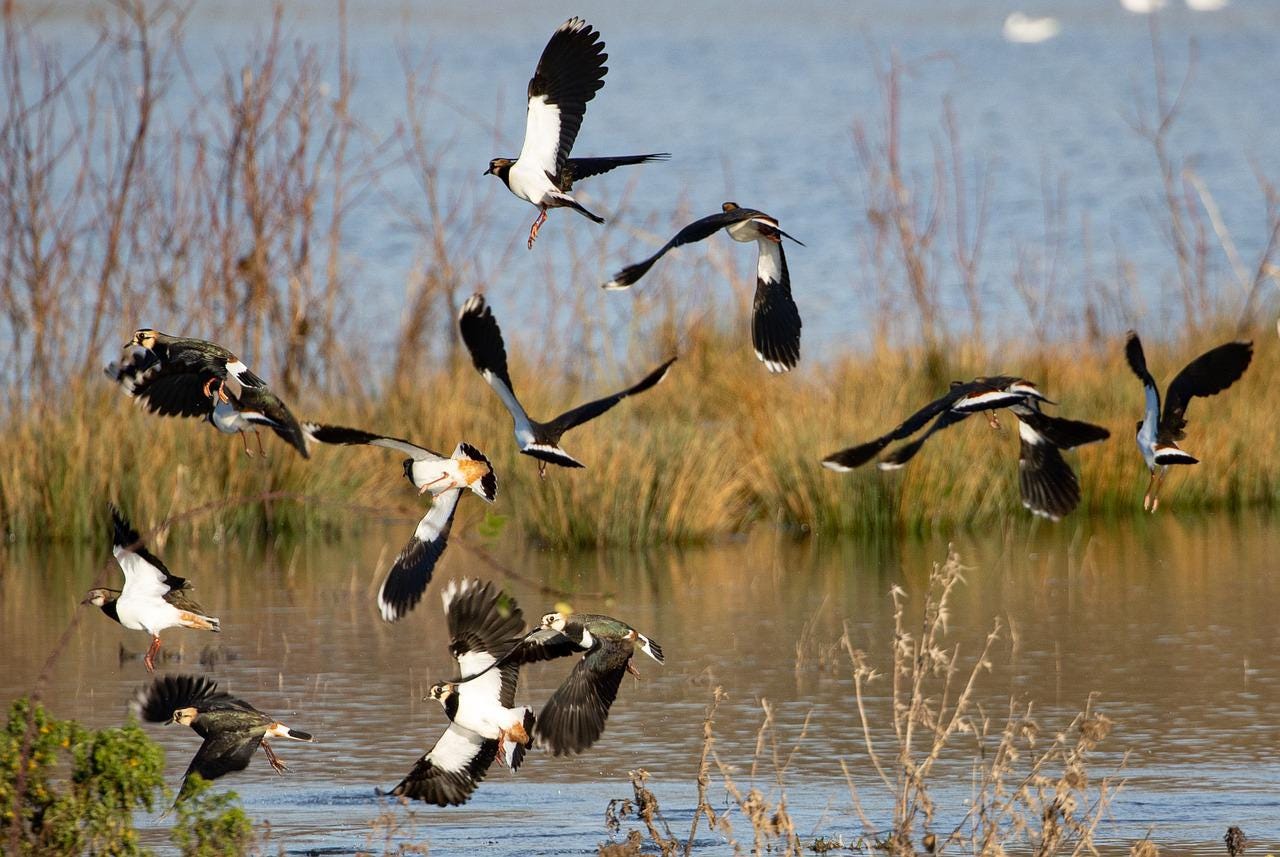The first sign of a lapwing in spring will likely be visual rather than auditory. With flapping beats of their black-and-white-seeming wings, lapwings scribble over the sky: at times slow and owl-like, but capable of ascending almost vertically, twisting and switching back, and tumbling towards earth.
Seen performing their tireless springtime chore of driving off predators, a lapwing is pretty unmistakeable. But when out of sight, obscured by a hedge or a wall of reeds, it may be their equally distinctive cries that first give them away.
The call gives the lapwing its old common name of peewit, among many regional variants (such as kiewit in Dutch, kivit in German).
It has an other-worldly quality to it. Author of the excellent Twitter birdsong project Lev Parikian says the sound reminds him of an early 1980s video game he used to play called Galaxian.
To my ear it’s not far off the swanee-whistle exclamations of The Clangers either.
But perhaps these alien comparisons tell a story in themselves. Something’s changed in our relationship with this bird.
Until very recently, the sound of the lapwing would have been nothing but familiar, wherever you lived in Britain.
For centuries lapwings found all kinds of open places to their liking: from upland pasture, island crofts, downland and meadows, to grazed river valleys, arable fields and marshland. Where there was countryside, more often than not there were ‘green plovers’.
Populations took a huge hit in places during the late 19th and early 20th century, when eggs were collected in vast quantities for eating.
Even so they remained common and widespread until the 1960s, when the intensification of farming began to make food and safe nesting places much harder for lapwings to find. Since then the decline has been most marked in southern England and Wales, with some 80% having disappeared.
Though far more thinly scattered now, lapwings can still be found here and there, on wetland reserves and in some areas of the wider countryside. That wild sound makes a very welcome surprise on a long walk through an otherwise lapwing-free landscape.
In May, breeding birds will have young chicks or eggs to protect and will throw themselves tirelessly at crows. See a lapwing go up and soon it will be a pair, perhaps more, as the act of collective defence takes shape.
In winter they tend to be much quieter, but make up for the lack of volume in numbers.
Hundreds of thousands of birds that breed in Northern Europe pour into the UK to spend the winter. Many of these gather on marshes and estuaries, but also on farmland, particularly wet pasture and freshly ploughed fields.
Seeing these flocks linger into early spring gives us a taste of what we might have experienced through much of the year in times past. And perhaps what we could see again, if we willed it.
Next week: Swift
🎶 Next Saturday: live birdsong with Ben Porter 🎶
Join a free online call to listen for Western woodland birds on Saturday 21st May.
We will be guided by naturalist, photographer and birdsong educator Ben Porter, who will be aiming to bring us live sounds from the woods of mid Wales, such as the songs of pied flycatcher, wood warbler and redstart.
Media credits:
Single lapwing image by leswhalley on Pixabay
Flock of lapwings image by theotherkev on Pixabay





